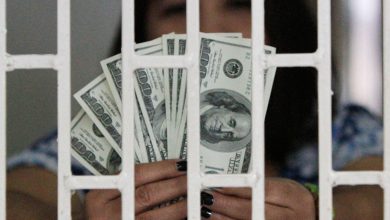Banks’ end-2023 NPL ratio drops to one-year low

PHILIPPINE BANKS’ nonperforming loan (NPL) ratio fell to the lowest in a year in December as borrowers were more capable of paying their debts amid low unemployment rates and slower inflation, analysts said.
The banking industry’s bad loan ratio went down to 3.23% as of end-December from 3.41% at end-November, preliminary data posted on the Bangko Sentral ng Pilipinas (BSP) website showed.
It was the lowest since the 3.16% recorded at end-December 2022.
Lenders’ gross NPLs stood at P446.99 billion as of December, rising by 12.09% from a year earlier but down by 1.6% from end-November.
Meanwhile, the loan portfolio of Philippine banks grew by 9.58% to P13.84 trillion at end-2023 from a year ago, and by 3.75% from P13.34 trillion in the prior month.
“Among others, the strong Philippine job numbers and slower inflation likely boosted the paying capacity of consumers, which likely underpinned the decline in NPLs,” Bank of the Philippine Islands (BPI) Lead Economist Emilio S. Neri, Jr. said in a Viber message.
High employment rates recently might have significantly improved borrowers’ capacity to pay off their debts, John Paolo R. Rivera, president and chief economist at Oikonomia Advisory & Research, Inc., said in a Viber message.
The Philippine consumer price index eased to 3.9% in December from 4.1% in November, the slowest in 22 months.
Headline inflation averaged 6% in 2023, slightly higher than 5.8% in 2022.
Meanwhile, the country’s unemployment rate dropped to a new record of 3.1% in December from 3.6% in November, bringing the full-year jobless rate to 4.3%, the lowest in almost two decades.
In December, the ranks of unemployed Filipinos dropped to 1.6 million, more than half-a-million fewer than 2.22 million a year ago. There were 2.19 million jobless Filipinos last year, lower than 2.67 million in 2022.
The employment rate in December also rose to a record 96.9%, above the 96.4% in November and 95.7% in December 2022. In absolute terms, employed Filipinos in December reached 50.52 million, up by 889,000 from a month ago.
On an annual basis, the country added 1.52 million jobs from 49 million in the previous year.
BSP data showed past due loans held by banks increased by 14.3% year on year to P547.37 billion as of end-December. This brought the past due ratio to 3.95% as of end-2023 from 3.79% a year earlier.
Meanwhile, restructured loans declined by 8.3% to P302.493 billion as of December from a year earlier. These borrowings made up 2.19% of banks’ portfolios, down from 2.61% at end-December 2022.
The industry’s loan loss reserves stood at P456.514 billion as of end-December, growing by 7% year on year. This was equivalent to 3.3% of banks’ total loans, lower than 3.38% a year earlier.
NPL coverage ratio at end-2023 stood at 102.13%, inching down from 107% as of end-2022.
“As interest rates are expected to be lower this 2024 since inflation is relaxing, there is a greater likelihood of (borrowers) being able to pay debts,” Mr. Rivera said.
The Monetary Board raised borrowing costs by 450 basis points from May 2022 to March 2023, bringing its policy rate to a 16-year high of 6.5%.
BSP Governor Eli M. Remolona, Jr. earlier said they might consider cutting benchmark interest rates in the second half if there is a sustained downtrend in inflation.
The Monetary Board will hold its first policy review this year on Feb. 15. — Keisha B. Ta-asan




